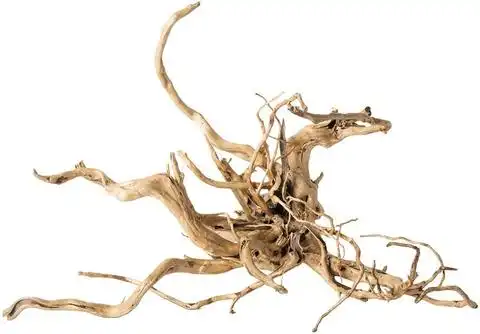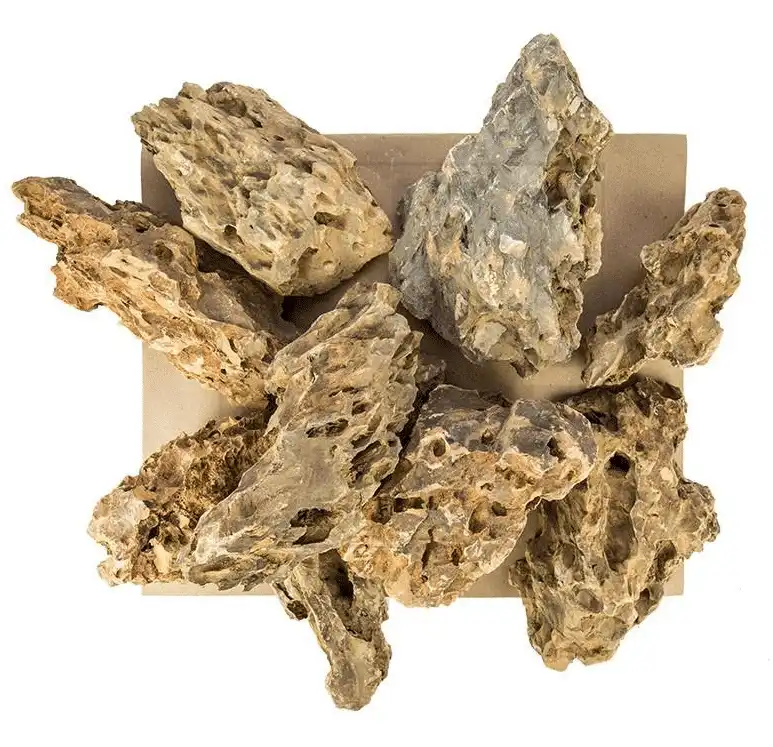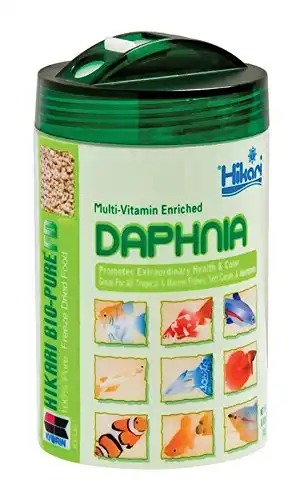Thank you for visiting! By the way… any links on this page that lead to products on Amazon and other stores/partners are affiliate links Aquarium Store Depot earns a commission if you make a purchase.
A peaceful fish species like Peacock Gudgeons will add vibrancy to your home aquarium. They are great centerpiece fish. Here we can give you insight into the right tank setup and breeding techniques needed for these vibrant creatures to flourish in their environment.
Key Takeaways
- Peacock Gudgeons are an attractive, peaceful species that prefer live food and shallow bodies of water.
- Create a comfortable tank for your Peacock Gudgeon with dark sand substrate, decorations & hiding places to mimic their natural habitat.
- Feed them high quality dry & live foods twice daily and choose compatible tankmates for optimal health!
Species Overview
| Scientific Name | Tateurndina ocellicauda |
| Common Names | Peacock Gudgeon, Peacock Goby |
| Family | Eleotridae |
| Origin | Papua New Guinea |
| Diet | Omnivorous |
| Care Difficulty | Easy |
| Activity | Active |
| Life Expectancy | 4 – 5 years |
| Temperament | Peaceful |
| Tank Level | Middle to bottom |
| Minimum Tank Size | 10 gallons (38 liters) for a pair. |
| Temperature Range | 72-79°F (22-26°C) |
| Water Hardness | 5 – 12 dKH |
| pH Range | 6.0 – 8.0 |
| Filtration/Water Flow | Moderate |
| Water Type | Freshwater |
| Breeding | Cave Spawner – Male guards eggs |
| Difficulty to Breed | Moderate |
| Compatibility | Community Tank |
| OK, for Planted Tanks? | Yes |
Introduction
Peacock Gudgeons, also known as the Peacock Goby (and scientifically as tateurndina ocellicauda), are a captivating species of freshwater fish native to Papua New Guinea and Australia. Admired for their appealing colors and mild-mannered demeanor, they make an outstanding addition to community tanks. With the right care and diet, it is possible that the average lifespan of this fish to reach up to 4-5 years!
The peacock gudgeon is a beautiful freshwater fish that have no issues diet wise. Preferring live foods, though they easily adapt to prepared foods. Due too needing shallow bodies of water during growth stages, you will want to seek out juvenile specimens around 6 – 8 months when purchasing these fish from breeders.
Origin And Habitat
Native to Papua New Guinea, Peacock Gudgeons inhabit slow-flowing bodies of water abundant in vegetation and warm temperatures with soft water. To recreate this natural environment in the aquarium setting it is essential to include hardy plants such as Anubias, Java ferns or Water Wisteria for them to hide within while also enhancing their colors against a dark sand substrate similar to what can be found naturally.
Because a Peacock Gudgeon prefers warmer and softer waters than other fish species, careful research is needed when choosing tankmates.
Appearance
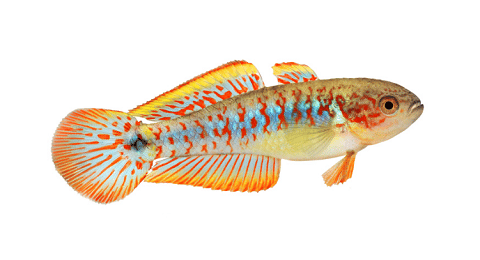
Peacock Gudgeons are a popular choice among aquarists for their stunning blue-silver hue and vibrant yellow abdomen, that is complemented by black and red stripes. It’s easy to distinguish a male Peacock Gudgeon from a female – the former have an unmistakable head lump while the latter feature dark fin lines. The fantastic pattern of these fish not only creates beautiful visual effects but also helps deter predators – with its distinct tail spot diverting attention away from more vital areas such as the head.
Tank Setup And Requirements (Peacock Gudgeon Care Guide)
When setting up a tank for Peacock Gudgeons, it is important to create an environment that accommodates their needs and also looks attractive. This means doing research on the best decorations, rocks, and hideaways that will keep them contented. To have healthy growth rates as well as low stress levels, Peacock gudgeon require slow moving water so adjusting pump or filter settings may be necessary in order to achieve this effect plus adding some decorative pieces to break the current could help too.
Tank Size And Water Parameters
Peacock Gudgeons need a tank of at least 10 gallons in order to thrive, although the ideal size is 15-gallon. The water temperature should range from 72 – 79°F with pH levels between 6.0 and 7.8, and water hardness 5 to 12dKH. Frequent testing of these parameters is helpful for keep these levels stable. A dark sand substrate that’s similar to its natural habitat would make your peacock gudgeon feel comfortable and show off their vivid colors best while adding rocks and driftwood can also provide an inviting environment for them too.
Best Value
A budget priced and easy to use driftwood. A great beginner aquarium decoration
Decorations And Hiding Places
To replicate the natural environment of Peacock Gudgeons, add a few aquatic plants to your tank as well as driftwood and caves for hiding places. These elements not only enhance their habitat aesthetically, but also provide similar biotope conditions to those found in Oceania.
Anubias, Java Ferns and water wisteria are some recommended plant choices which serve various functions such as providing shade or acting like filters during spawning periods. Rocks, including hollowed out stones, can act like makeshift homes offering homes. Having such decorations will keep the stress levels of your Peacock Gudgeon low.
Editor's Choice
Ohko is the premier aquascaping rock today. Granite based with amazing shapes and selection
Feeding Your Peacock Gudgeon
The diet of Peacock Gudgeons should be primarily composed of high-quality, dried food, but it is beneficial to supplement their meals occasionally with protein-rich live options like bloodworms, blackworms, or daphnia. To ensure they remain healthy and that the colors are vibrant, you must feed them only as much as necessary twice a day. Too little can lead to malnutrition while an excess could upset water quality.
Feeding Frequency And Tips
Peacock Gudgeons may not be as specific in their diet when compared to other fish species, yet they still have distinct dietary needs. As predators, these fish relish live insects, grubs and other small animals. To ensure good nutrition for your Peacocks, it is recommended that a selection of both fresh and dried foods are offered daily or every few days.
Daphnia is a great food source for fish. Comes multi-vitamin enhanced and easy to feed.
Maintaining proper water quality is important with the Peacock Gudgeon – so any remaining food should always be removed quickly after feeding time has passed if you want the best health outcomes for them overall. Providing an assortment of high-quality dry goods together with some kind of living feed will make sure that all nutritional requirements for your Peacock Gudgeon are met properly over time.
Potential Tank Mates
When selecting tank mates for Peacock Gudgeons, you must be mindful of their size and temperament as well as the environment they are placed in. It is important to choose fish that will fit comfortably with peaceful species like your Peacock Gudgeon without disturbing or intimidating them.
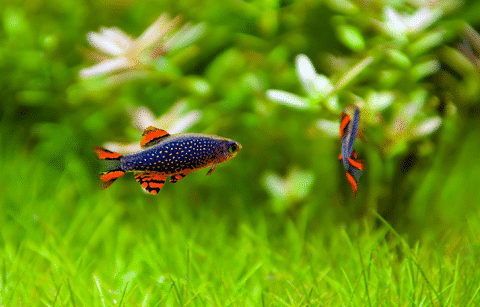
Larger territorial fish should not share a habitat with Peacock Gudgeons unless there’s enough space in the tank. Any smaller fish that can fit in their mouths may become prey very quickly! To create an ideal cohabitation atmosphere, it is recommended to include compatible schooling and small catfish-like creatures too. An adequately sized aquarium paired up with plenty of shelter creates beautiful harmony between all its inhabitants while still keeping everyone safe from harm’s way. In saying that, here are a few great peacock gudgeon tank mates to try:
- Cherry Barb
- Celestial Pearl Danio
- Harlequin Rasbora
- Neon Tetra
- Corydoras Catfish
- Dwarf Gourami
- Platies
Bad Tank Mates
When considering tankmates for Peacock Gudgeons, make sure to choose peaceful fish species that won’t pose a threat. Aggressive or larger varieties like cichlids, big catfish and predatory fish should be avoided as they can harm the gudgeons or even eat them! Here are a few bad examples:
- Most Cichlids
- Bettas – The colors of the Peacock Gudgeon will make the male Betta aggressive towards it
- Large freshwater catfish
- Tiger Barbs
- Goldfish
- Common Plecos
Breeding
Peacock Gudgeon breeding is an enjoyable and rewarding pastime for experienced freshwater aquarium keepers. To initiate breeding, it’s important to source a mating pair of the species before transferring them into their own separate breeding tank. Providing nutrient-rich live food together with places they can hide, such as in caves or PVC pipes, will help enhance reproductive success. The female will lay between 50 – 100 adhesive eggs which the male then fertilizes. There is an excellent video by Dans Fish below that goes through the process.
The Peacock Gudgeon is unique as its the males who take care of the eggs until they hatch. They look after them until hatching happens 8 – 10 days later on average. It’s actually a better idea to have the male watch the eggs over female peacock gudgeons (as the female may actually eat the eggs).
Once those eggs have hatched, parental duties stop from that point forward and you must provide suitable meals for your new Peacock Gudgeon fry. Foods like powdered feed plus infusoria so your fry can thrive properly until reaching maturity when eating baby brine shrimp becomes necessary again. With attentive care breeders should find experiencing reproduction within this fish species both fascinating & beneficial!
Mating Behavior And Egg Care
When it comes to breeding, the unique courtship rituals of Peacock Gudgeons are noteworthy. An aquarium containing 6-8 individuals will allow each one an opportunity to choose their desired mate, during which time the male displays outstretched fins in order attract his counterpart into a secure hideout.
Once there, she lays her eggs on the ceiling and is then expelled from this chamber by him. Who then assumes responsibility for protecting them until they hatch? During this incubation period, he vigilantly guards over them while fanning with his gills as well as helping clean any dirt that may form around them both assisting with oxygen circulation when necessary (the female can lend assistance here).
By being mindful of these behaviors associated with reproduction, hobbyists should have no problem successfully raising these captivating freshwater fish species!
Common Health Issues
Aquarium fish such as Peacock Gudgeons can be prone to common freshwater fish illnesses, including ich, worms and parasites, hole-in-head disease and gill flukes. It is important for aquarists to recognize the signs of these potential issues in order to ensure their aquatic friends remain healthy.
Early diagnosis followed by appropriate treatment is essential if you spot any indications that your Peacock Gudgeons could be suffering from an illness – whether it’s white spots on its body (indicative of ich), rubbing against decorations (suggesting a parasite infestation) or abnormal growths on its head/face area (symptomatic of hole-in-head).
Preventative Measures and Treatment
In order to maintain the wellbeing of Peacock Gudgeons, it is essential to keep their tanks clean and cycled. Regularly check on water conditions. Check for the follow levels regularly:
Stress is another major factors. Keep compatible tank mates as explained in the previous section and feed your fish a balanced diet. Make sure any potential health issues can be addressed quickly before they become more severe.
When introducing new fish or treating existing illnesses such as ich, worms, or hole-in-head diseases, isolation in a quarantine tank along with relevant medication are critical steps for prevention and treatment methods respectively. Providing them an adequate diet while also creating a stress free environment plays equally significant roles in protecting these fishes’ health both short term and long term from possible problems down the road.
Frequently Asked Questions
Is Peacock a gudgeon community fish?
If you’re pondering the idea of having Peacock Gudgeons in your tank, it’s beneficial to maintain a group. They are peaceful and non-violent creatures, so living together will support their physical health as well as emotional wellbeing. The ideal number is 6 to 8 members – that way there’ll be ample space for them to explore and swim around freely.
How many peacock gudgeons in a 10 gallon?
If you have a 10-gallon tank, how many Peacock Gudgeons should you keep? Generally speaking, it’s best to keep 6 or fewer in a 10-gallon tank. That being said, some people believe that even a 10-gallon tank is big enough for this species of fish since they don’t swim a lot.
Ultimately, it’s up to you!
Is Peacock a gudgeon community fish?
The Peacock Gudgeon is an ideal selection for any type of community tank due to its peaceful disposition and attractive colors. It’s recommended that you add a minimum of three to four in order for them all to get along comfortably, so if this vibrant fish appeals to you, it would be beneficial keeping at least the specified number together.
This species will bring life into your tank with their vibrancy and presence – don’t miss out on having these lovely creatures as part of your aquatic family!
Can I keep 1 Peacock Gudgeon?
When it comes to Peacock Gudgeons, experts suggest that a group of at least 6-8 individuals is the ideal setup. Even though these fish can survive in smaller groups or by themselves, they are small. More content when there’s plenty of social interaction among them. Thus, for optimal wellbeing and happiness levels, keeping your gudgeons as part of an extended family is highly recommended!
Are peacock gudgeons aggressive?
From what people have shared, peacock gudgeons are usually peaceful, but male peacock gudgeons may become aggressive toward each other when they’re competing for resources. Though aggression is rare, it’s best to keep an eye out in case any disputes arise between fish of the same size.
Generally speaking, peacock gudgeons should be okay living with other species peacefully.
Closing Thoughts
Caring for Peacock Gudgeons is truly gratifying as these captivating and serene creatures give a vivid look to your tank. By understanding how to best meet their needs in terms of setup, water parameters, feeding routines and even breeding practices, you will be able to create an ideal habitat where they can prosper. With the right attention given to them, peacock gudgeons will bring splendor into your aquatic environment that should last many years ahead.
- About the Author
- Latest Posts
I’m thrilled that you found Aquarium Store Depot! Here you’ll find information on fish, aquariums, and all things aquatics related. I’m a hobbyist (being doing this since I was 11) and here to help other hobbyists thrive with their aquariums! I adhere to a high quality Editorial Process and Review products with real life field usage and practical analysis.


